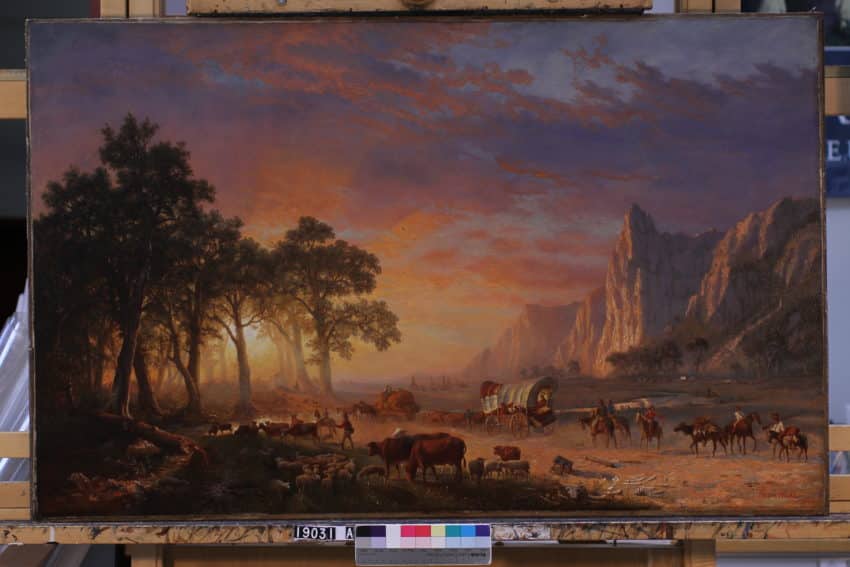
Oregon Trail, 1869 by Albert Bierstadt recently received a paintings conservation treatment at McKay Lodge Conservation Laboratory. Stefan Dedecek, Conservation of Paintings, Murals, and Polychrome Surfaces, has performed many conservation treatments of Bierstadt paintings as well as other Hudson River School artists over the years.
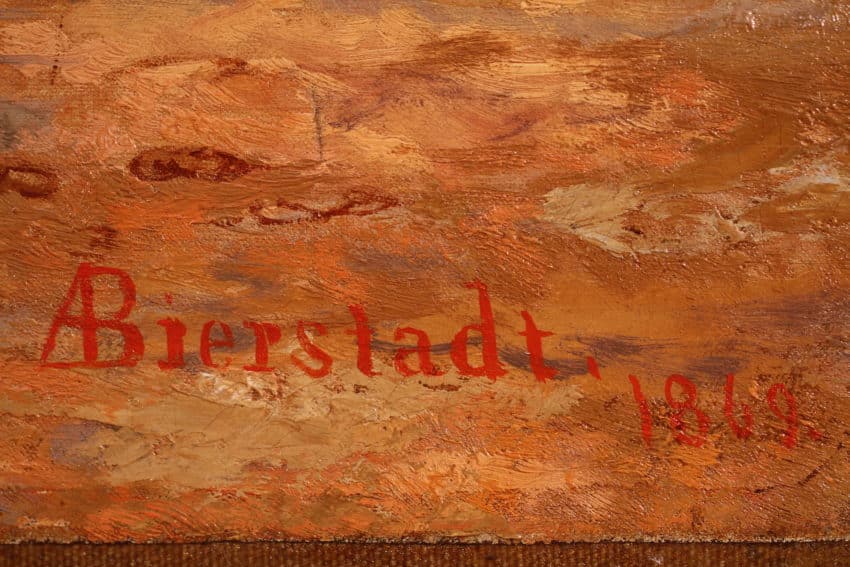
The Oregon Trail is a historic trail winding over two thousand miles from the East to West of the United States. From fur trappers to farmers to religious folks, many people used the trail to explore and settle in the West in the 19th century. Among them included German-American painter, Albert Bierstadt, who is well known for his sublime landscapes of the American West.
Beirstadt was an artist associated with the Hudson River School, and he was known especially for his Luminist style. The execution of Oregon Trail by Bierstadt is a typical of his other work. It features a caravan of covered and supply wagons drawn by horse or oxen moving into the woods towards a glowing sunset. In the background, another covered wagon caravan, a mountain range, and an encampment of tipis are seen. In the foreground, the ominous skeletal remains of a bovine are found next to a herd of cattle and sheep, perhaps a symbol for the perilous journey ahead.
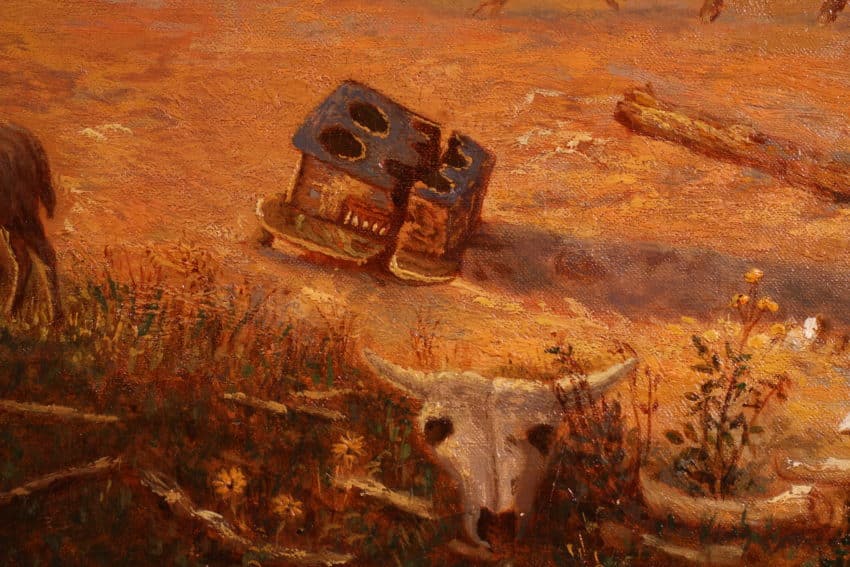
Before the conservation of the Beirstadt painting, it was carefully examined. In the before treatment image, it may seem that the painting does not require any conservation; however, a close visual examination with normal and Ultra-violet (UV) illumination reveals otherwise. Condition issues discovered related to previous restoration campaigns and simply age.
The varnish on the painting was intact, but slightly yellowed. It has also pooled in the paint texture, creating small glossy areas on the surface that are visually distracting. At some point the canvas was also attached a board which irreversibly impacted the painting. Artifacts from the procedure include pronounced fabric weave on the front of the canvas and damaged paint texture. Under UV illumination, areas of retouching are visible. These are seen as dark black areas (or areas that do not fluoresce), mostly in the sky. An old diagonal tear repair is also seen in the upper right corner of the painting.
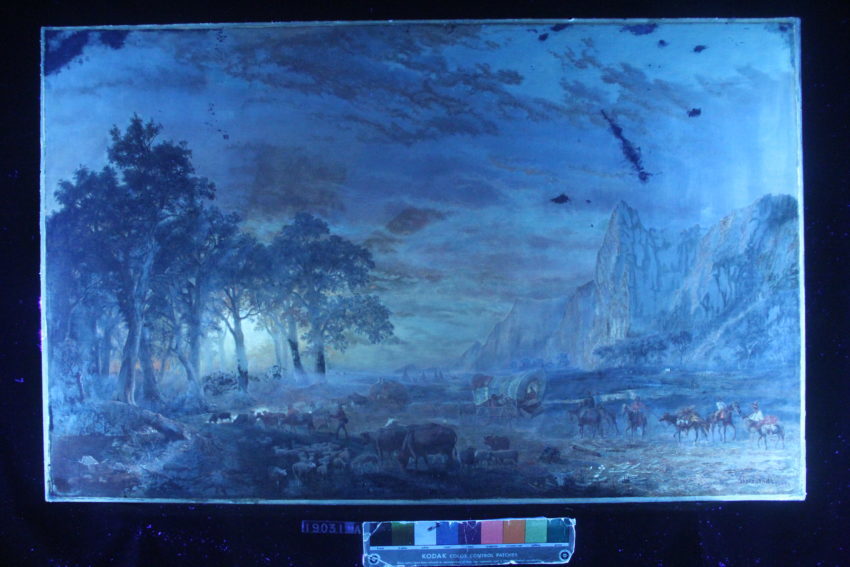
The painting is generally considered to be in good condition despite the above-mentioned issues. The conservation treatment of the Bierstadt painting was thus limited in its scope, and the goal of treatment was mostly to improve the appearance.
For the conservation of the Bierstadt painting, Conservator Dedecek decided the least invasive methods was to leave the existing varnish in place, but it was treated with nonpolar solvent mixtures to reduce the yellow color and create a more even layer. The minor paint losses were addressed once this step was complete.
An isolation varnish was applied then losses were filled and inpainted. These losses that once interrupted the image of the painting were now seemingly invisible creating a continuous painted surface.
A final varnish layer with a UV inhibitor was applied as a protective coating on the painting. The varnish along with the inhibitor helps to protect the painting from dust, abrasion, and deterioration from UV light exposure. It also helps resaturates color, restoring the painting to its original appearance as much as possible. The painting was then reframed in its original frame with a new archival backing board and hanging hardware.
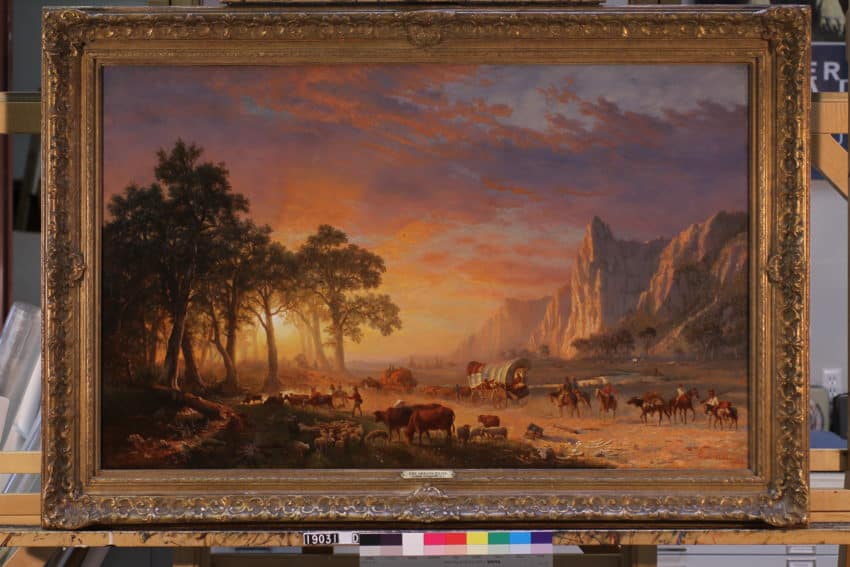
After treatment, it may not appear much different than before treatment. Whenever possible, art conservators must choose the least invasive methods to preserve historic and artistic works. All materials and treatment methods used in the conservation of the Bierstadt painting, Oregon Trail, are reversible.
Albert Bierstadt was born in Germany in 1830, but he moved with his family to New Bedford, Massachusetts a couple of years later. He returned briefly to Europe, sketching and painting the mountains ranges. It was there he further developed his artistic skills before joining an overland survey expedition to explore the American West in 1857. With sketches from the survey, Bierstadt returned to his studio in New York painting landscapes of the frontier on a grand scale. Eventually the artist became internationally recognized for his work.
After his death in 1902, his work lost popularity, only to be rediscovered in the 1960s when the preservation of national lands became popular in America.
